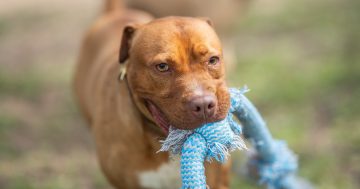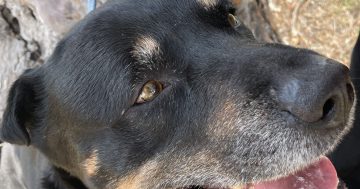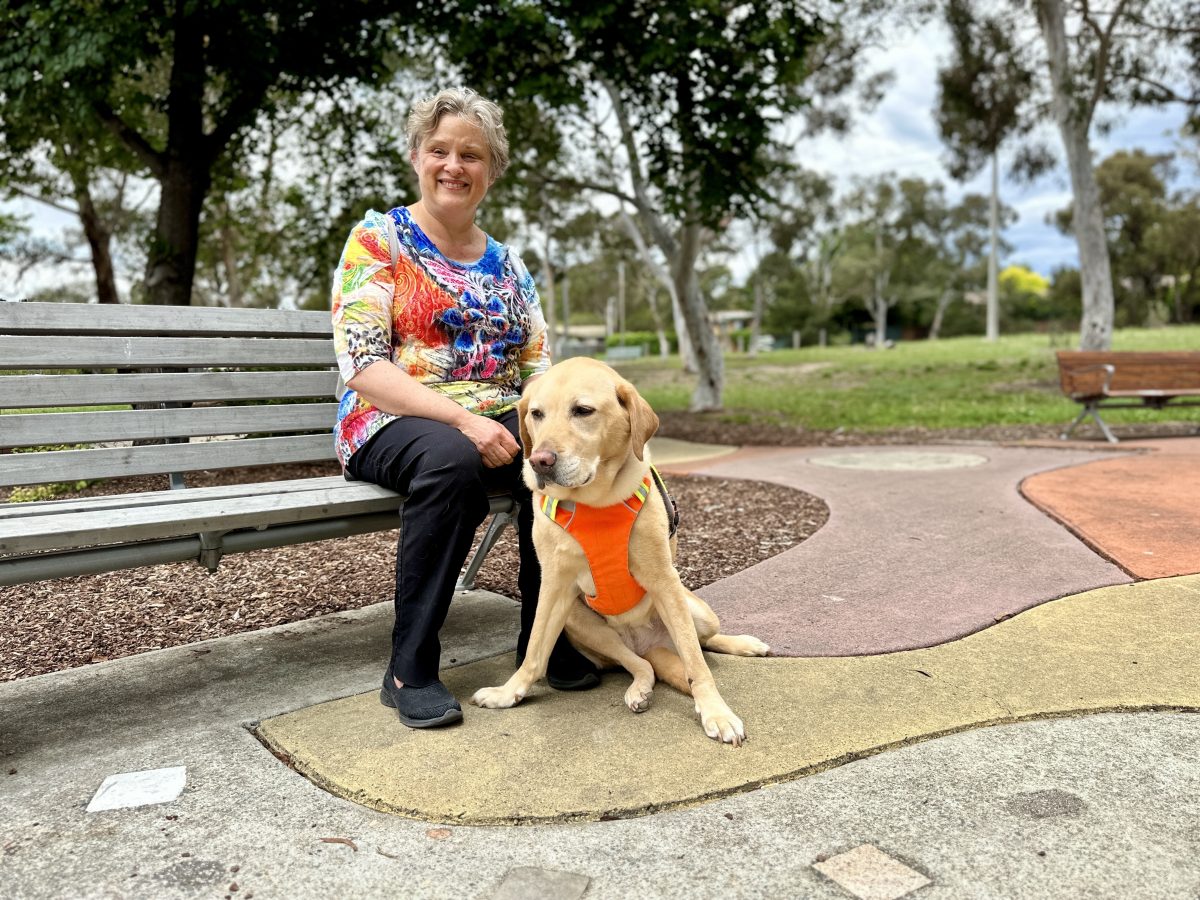
Amanda Heal and her guide dog Sadie outside Jamison Shops. Photo: James Coleman.
“Five lawyers go out to a Thai restaurant for lunch …”
This sounds like the beginning of a bad joke, but Amanda Heal goes on.
“I was a lawyer as well and walked in to join them and the restaurant owner immediately goes, ‘No, bad dog, bad dog!’ I didn’t even have to open my mouth – all the other lawyers jumped up and said, ‘That’s a guide dog, and it’s allowed in’. The owner just said, ‘Oh’.”
Amanda has been fast friends with her golden Labrador guide dog, Sadie, since March 2015.
“I trust her with my life – she’s my companion, my best friend.”
There’s a mural buried in the ruins of the Roman Herculaneum, which may depict the first relationship between a dog and a blind person. But the modern guide dog traces its origins to a German doctor who helped thousands of soldiers returning blinded from the fronts of World War I. Closer to home, Dr Arnold Cook arrived in Australia in 1950 with the country’s first guide dog, a black Labrador named Dreana.
And yet, despite the long history of guide dogs, it seems not everyone is clear on the dos and don’ts of interacting with guide dogs.
For International Day of People with Disability earlier this month, the ACT Government’s Domestic Animal Services (DAS) operation reminded the public they take reports of refused access “seriously”.
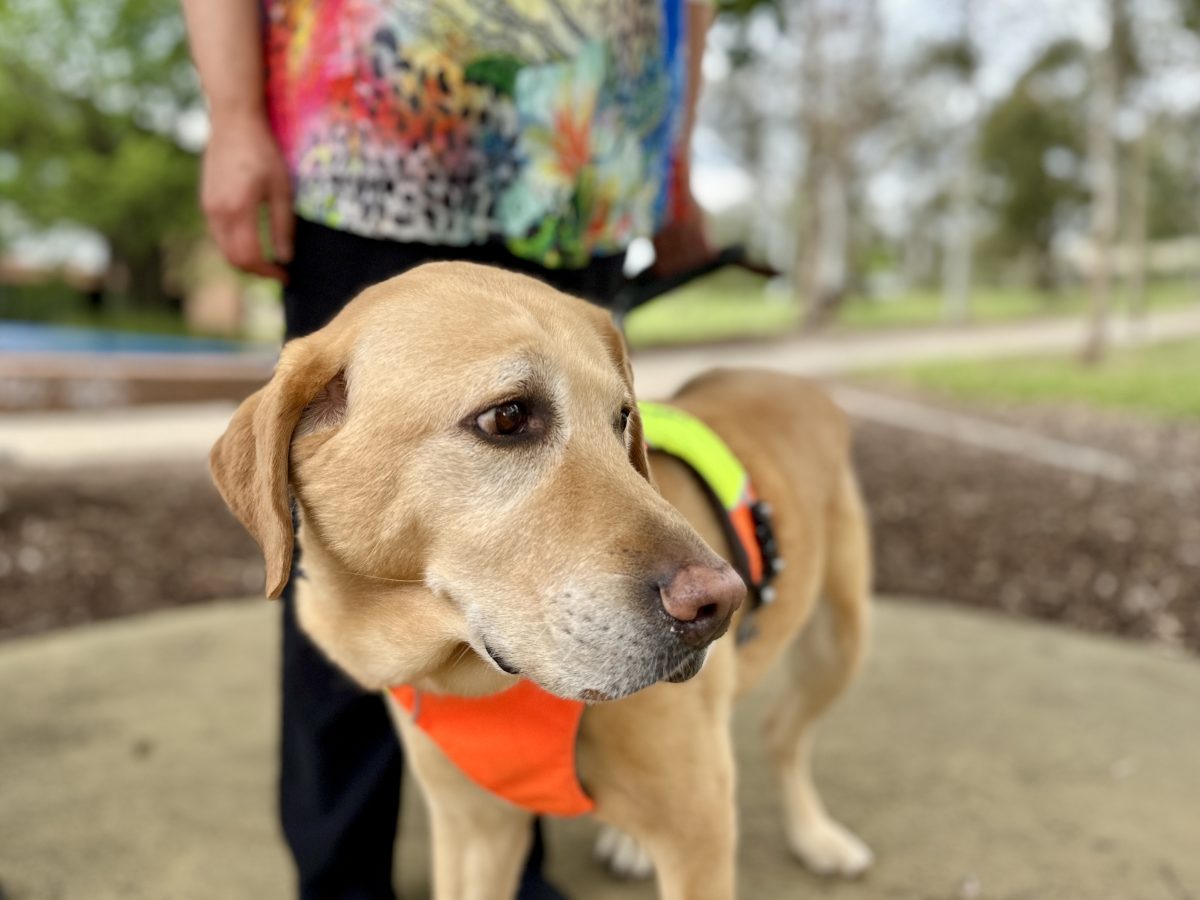
Sadie has been Amanda’s faithful friend since March 2015. Photo: James Coleman.
“The maximum penalty for refusal of a service dog or assistance animal is $8000, so it’s quite hefty,” DAS senior director Chris Mooney says.
“They have access rights under Commonwealth legislation, so it’s very important you don’t deny that unless there’s a reasonable excuse you can’t let a dog in, whether it’s a behavioural or hygiene issue.”
He says the team doesn’t receive many reports but suspects instances are “very much under-reported”.
Amanda was born blind and grew up using a cane to feel the ground ahead until she was introduced to a friend’s guide dog as a teenager. She applied for her first from Guide Dogs Australia when she was 19 as she had to walk across a university campus from lecture to lecture.
There’s an assessment process that Amanda compares to dating – “they match you with the dog that best suits your needs”.
The dogs cost between $50,000 and $80,000, but not only does Guide Dogs Australia cover this amount through donations from the public, but the purchase is also covered by the National Disability Insurance Scheme (NDIS).
“I hold the handle and can feel Sadie’s body movements through the harness,” Amanda explains.
“It’s a much freer form of moving. I like to tell people it’s almost like being guided by a toddler because she knows what she’s supposed to do, but sometimes she gets distracted and I have to direct her.”
She says shops, restaurants, and ride-share services are “usually pretty good these days”.
“I’ve only been refused like three times over the whole 30-odd years I’ve had a guide dog,” she says.
“If I do have trouble, it’s generally a restaurant of another culture, and just because they don’t know.”
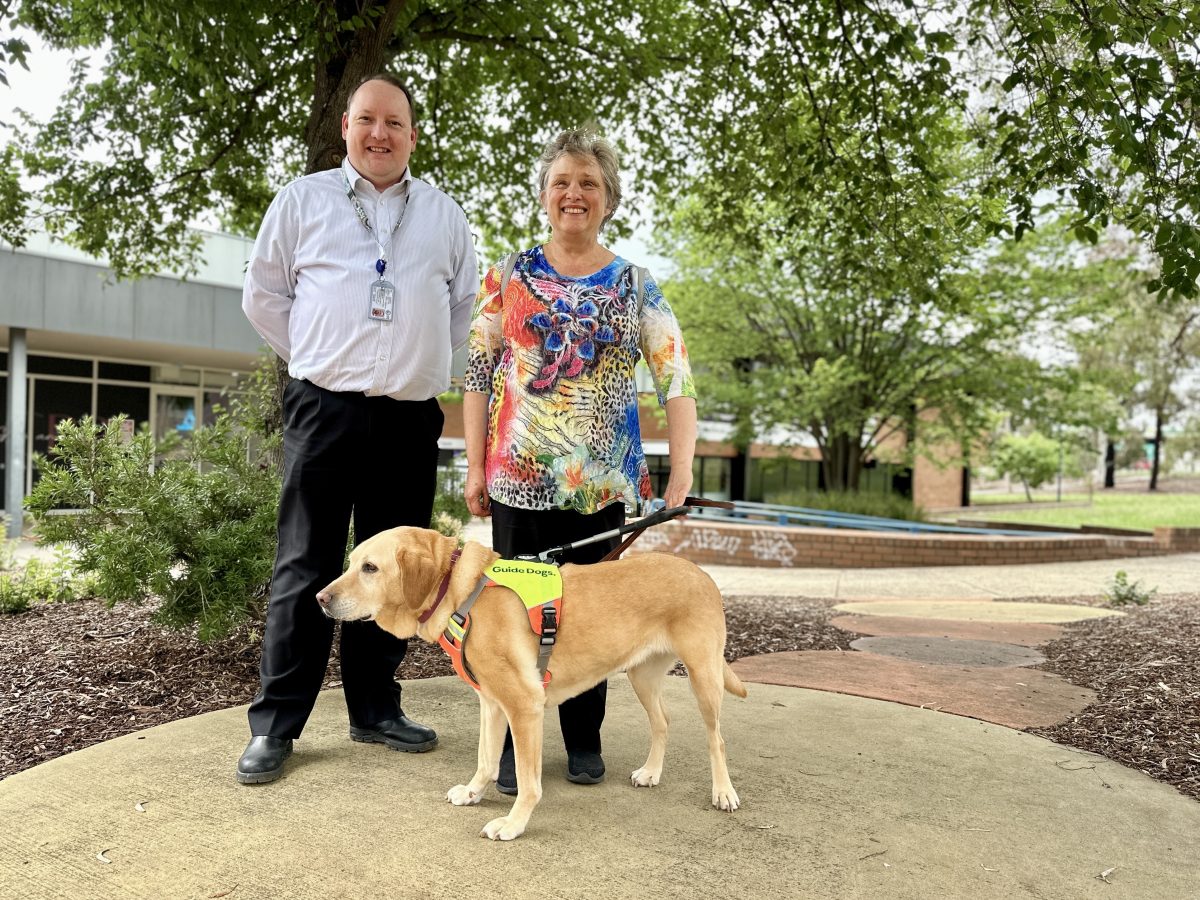
DAS senior director Chris Mooney says the maximum penalty for refusal of a service dog or assistance animal is $8000. Photo: James Coleman.
One memory that does sting to this day is the time a taxi pulled up on her mum’s driveway to take her back home, only for the driver to spot the dog and take off, even as Amanda was running her hands down the side of the car to find the door handle.
But far more common is well-intentioned people attempting to pat Sadie.
“Please don’t pat the dog while it’s wearing its harness – it’s on duty,” Amanda says.
“If you distract a guide dog, you could put its handler in danger. Guide dogs are clean and safe. They’re allowed in all public places without permission and on all public transport. The dog won’t bite, and they’re well looked after and well trained.”
Donate to Guide Dogs Australia online.












